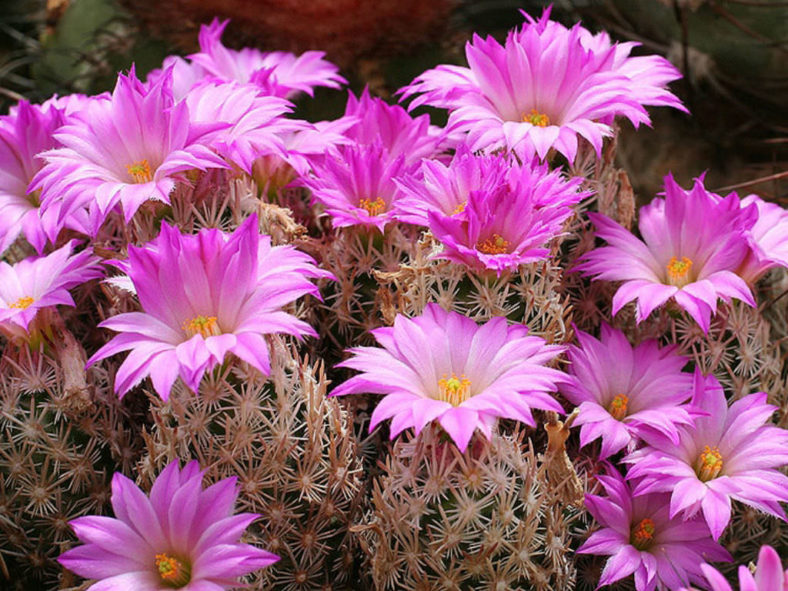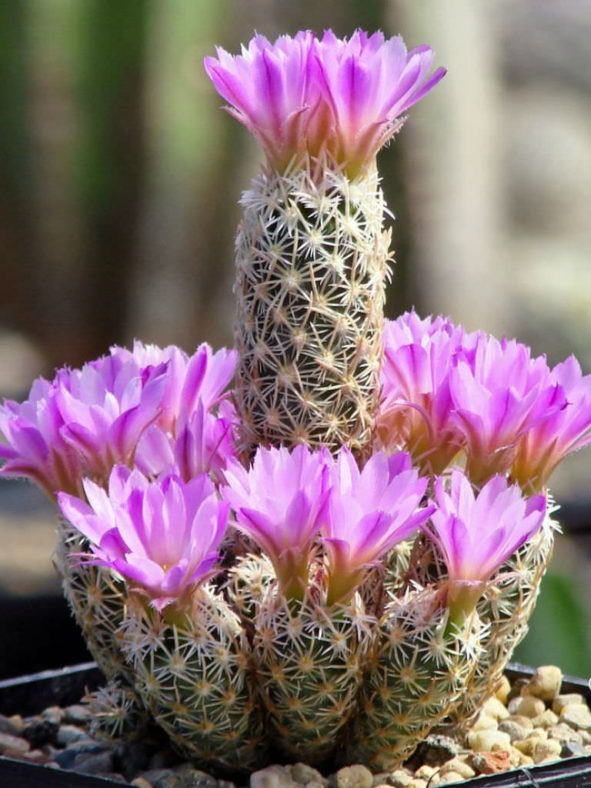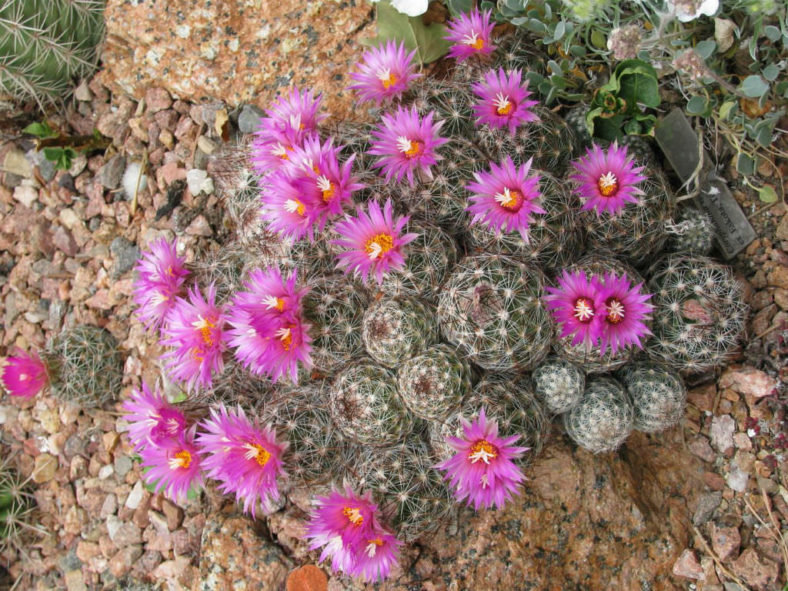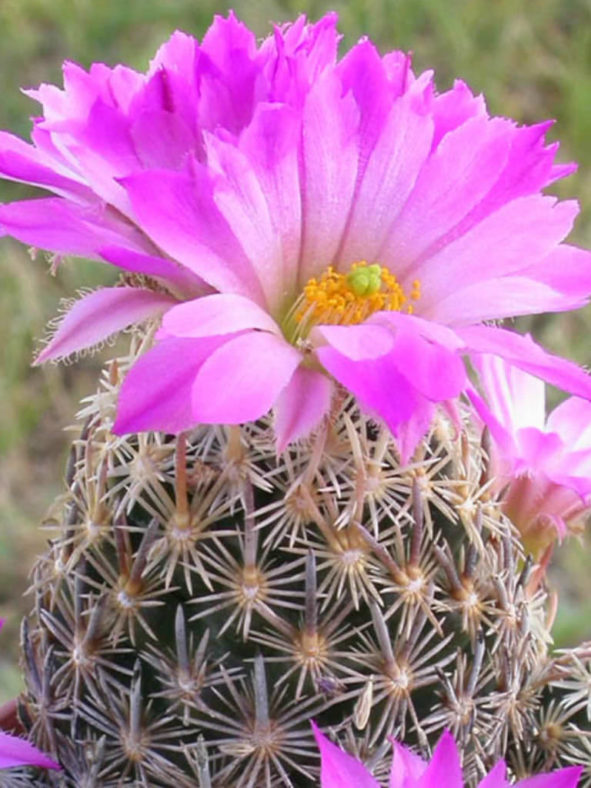Scientific Name
Escobaria minima (Baird) D. R. Hunt
Common Name(s)
Birdfoot Cactus, Dwarf Cory Cactus, Least Cory Cactus, Nellie Cory Cactus, Nellie's Pincushion Cactus
Synonym(s)
Coryphantha minima, Coryphantha nellieae, Escobaria nellieae, Mammillaria nellieae, Neobesseya minima
Scientific Classification
Family: Cactaceae
Subfamily: Cactoideae
Tribe: Cacteae
Genus: Escobaria
Etymology
The specific epithet "minima" (pronounced "MIN-eh-muh") means "least, smallest" and refers to the miniature size of the stems of this species.
Origin
Escobaria minima is native to the Chihuahuan Desert in the United States, where it grows in mats of Selaginella in rock crevices. It is found only in Brewster County, Texas, where three populations remain near Marathon.
Description
Escobaria minima, formerly known as Coryphantha minima, is a small cactus with spherical to cylindrical stems with conical tubercles tipped with dense clusters of pale tan to pinkish-gray spines. In its natural habitat, this species usually grows solitary or in groups of 2 to 3 stems but is branched profusely in cultivation. The stems can grow up to 1.1 inches (2.7 cm) tall and 1 inch (2.5 cm) in diameter. Each areole bears 1 to 4 central and 13 to 24 radial spines, all about 0.2 inches (0.5 cm) long.
The flowers are pale rose-pink to magenta, shading gradually to paler pink or white basally, and sometimes with darker midstripes. They are funnel-shaped and can reach a length of 0.6 inches (1.5 cm) and a diameter of 1.1 inches (2.7 cm). They appear at the top of the stems in several flushes, primarily in mid-spring. The fruits are green, sometimes slightly yellow-tinted, more or less egg-shaped, and can grow up to 0.25 inches (0.6 cm) long and 0.15 inches (0.4 cm) in diameter.

Hardiness
USDA hardiness zones 9a to 11b: from 20°F (6.7°C) to 50°F (10°C).
How to Grow and Care
Escobarias are very susceptible to rot. Therefore, they require well-drained soil without any water excess or stagnation. It has been observed that the plants also suffer from environmental humidity, which should preferably remain very low (30 to 50 %). Avoid watering during the winter, when the plant is dormant. Watering Escobaria in cold environmental conditions will almost certainly lead to the death of the plant. In the growing season, the plants, whose growth is typically quite slow, like to perceive a significant temperature difference between night and day.
The experienced grower knows well the difficulties of survival of the members of this genus, which is certainly not one of the easiest to grow. The seed germination rate is lower than that of other genera, and other propagation methods, such as offsets or cuttings, are preferable.
Learn more at How to Grow and Care for Escobaria.
Links
- Back to genus Escobaria
- Succupedia: Browse succulents by Scientific Name, Common Name, Genus, Family, USDA Hardiness Zone, Origin, or cacti by Genus
Photo Gallery
Click on a photo to see a larger version.


